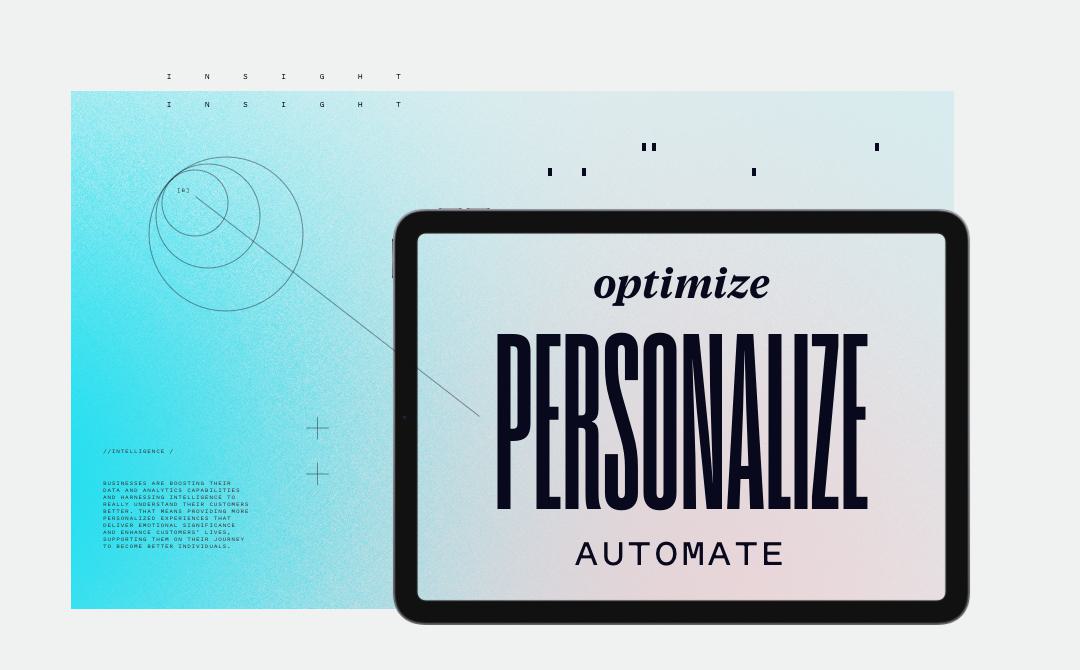
Intelligent Products
Building Your Future with Intelligent Products
In our previous article, Products are static. Intelligent Products are dynamic. Which do you think your customers are choosing?, we defined intelligent products as an ecosystem of integrated capabilities working together to continuously create more powerful, meaningful, and performant products over time and at scale.
Intelligence built into products is no longer just a competitive advantage, it’s a competitive necessity. This focus on intelligent product solutions is driven by two main priorities:
- Businesses need new ways to design and develop digital products and services that continuously align with evolving customer needs as well as embracing personalization trends.
- Businesses of all sizes are realizing that modern applications built with ML algorithms yield data and insights that can be a serious differentiator in the marketplace.
Data generated with ML enables products to learn autonomously, adapt, and discover user behavior patterns for ongoing performance improvements. In fact, Forrester predicts that US businesses driven by customer insights will see $1.2 trillion more per year than their less-informed peers.
The writing is on the wall. Intelligent technology solutions are becoming the leading standard for modern technology companies. Businesses are either shifting to intelligent products or have already started to implement them.

Opportunities? Intelligent products have you covered.
To say the possibilities are endless might be a bit of an overstatement. But when it comes to intelligent products, not by much. In the interest of space (and your time) let’s whittle that list down to the big three.
I. Optimize performance over time and scale
Intelligent products consist of sensors, processes, software, and data that drive significant improvements to the way products function and perform, now and into the future. Together, these product features allow the enhancement of product performance, so they’re more reliable, decreasing product downtime. This has never been possible or cost effective at scale. Until now.
II. Generate more meaningful customer experiences
Businesses are boosting their data and analytics capabilities and harnessing intelligence to really understand their customers better. Intelligent products provide more personalized experiences that deliver emotional significance and enhance peoples’ lives.
What’s more, personalization technology can suggest custom training and learning paths by analyzing past performance trends of individuals, teams, or departments, leading to greater satisfaction and loyalty driven by the user experience.
III. Build (and keep) better teams
Just as consumer behavior is evolving, so too is employee behavior. Intelligent products automate tasks so teams can focus on solving business challenges and creating innovation technologies, rather than the daily minutiae of maintenance. It’s a shift in team empowerment that inspires employees and creates a culture of intelligence and modernization. Now, cross functional teams can help solve challenges to get to market faster and drive more revenue.
Additionally, businesses can leverage this information to keep their employees connected and informed with relevant and time-sensitive information, enabling them to simply do their jobs better, and at greater scale.
True change starts here
Operational inefficiencies, unmet user needs, legacy technology not set up to make continuous product improvements over time. For companies that regularly lag in feature outputs or are unable to act swiftly on customer data insights, intelligent products will free them up to accelerate innovation and time to market. And because advanced technology products are becoming more accessible, their use is no longer confined to large enterprises. Today, businesses of any size can begin the process of transforming by using ML-powered software to overcome many of the challenges they face today.
Interested in learning more?
For a more complete picture of what intelligent products can do for you, download the full whitepaper.